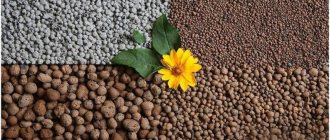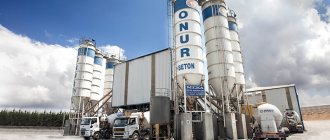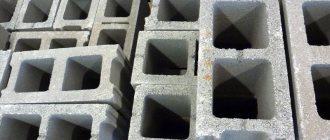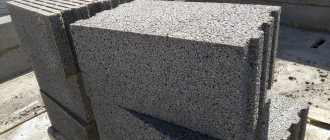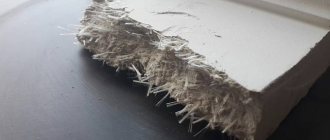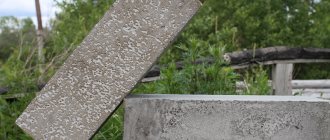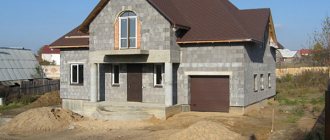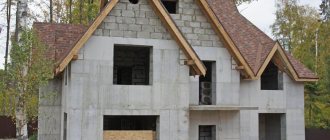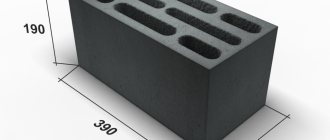According to experts, today there are about 160 factories producing expanded clay in Russia. The total annual production of expanded clay is about 3.5 million m3. One of the trends in the expanded clay gravel market is the growth in sales of packaged expanded clay. According to the price lists of retail and wholesale companies, the cost of 1 m3 of expanded clay starts from 1000 rubles, one bag - from 90 rubles and depends on the order volume and the terms of the supply agreement.
Where to start an expanded clay production business
Expanded clay production is exactly the type of manufacturing business that is tied as closely as possible to the raw material base. In this case we are talking about clay, which in its composition and properties, depending on the deposit, can vary greatly. The best clays for the production of expanded clay are those that are easily intumescent, that is, with a good swelling coefficient. But such “ideal” raw materials were widely available only in Soviet times. Today, in order to obtain high-quality expanded clay, the manufacturer is forced to use gas-forming and burn-out additives. Therefore, depending on the properties of the clay of a particular quarry, the process of expanded clay production itself will be different, namely the drying time of the granules, crust formation, burnout of additives, release of a gas-forming agent, crystallization, etc.
“It is not a fact that clay of different composition will work on the same line. That is, it will work, but the quality of the resulting material will differ. Accordingly, the operating parameters of the equipment should also be different.”
Expanded clay manufacturing process
The properties of the material are influenced by how expanded clay is made. After all, it is during the manufacturing process that the material acquires its unique properties. It should be noted that the word “expanded clay” is translated from Greek as “burnt clay.” The technology for producing expanded clay is that the prepared clay is subjected to powerful thermal shocks. As a result, the material swells and acquires the desired porosity. Under the influence of high temperatures, the outer shell of the granules melts, thanks to this, the expanded clay is sealed and acquires high strength characteristics.
Technological diagram for the production of expanded clay
The technological scheme for the production of expanded clay is as follows:
- extraction of raw materials and their delivery to a storage point;
- processing of incoming raw materials and preparation of granules or grains of a certain size;
- heat treatment of raw materials: drying, roasting, cooling;
- sorting, crushing (if necessary), separation of finished products depending on density;
- warehousing, or shipping and delivery to the customer.
Clay deposits are developed using the open-pit method. Raw materials are extracted using excavators (single-bucket or multi-bucket). Extraction of metamorphic clay (shale, mudstone) involves preliminary drilling and blasting.
Clay storage facilities ensure continuity of expanded clay production by storing a six-month supply of raw materials and keeping them from freezing. Clay is also stored outdoors in special intermediate cones. At the same time, natural changes in temperature (especially frost) and humidity contribute to the destruction of the natural structure of clay, which facilitates its subsequent processing.
How much money do you need to start an expanded clay production business?
The total investment for opening a mini-production of expanded clay can amount to over 16 million rubles. The biggest expense is the purchase of an expanded clay production line. The main supplier of equipment is, of course, China. Not that it’s the main one, it’s just that the majority of offers on the market for equipment for the production of expanded clay come from Chinese suppliers. As experts advise, you should not skimp and look for cheap expanded clay. There is a whole galaxy of charlatans operating in this market, promising to build an expanded clay plant for a couple of tens of thousands of dollars. They will build it, but it is unlikely that they will be able to put such an “enterprise” into operation.
Equipment for the production of expanded clay
Expanded clay production line
After registering an enterprise and obtaining permits from the relevant services, it is necessary to purchase equipment for the production of expanded clay, the set of which includes:
- special machines for loosening clay, equipped with feeders and grates;
- mixer;
- stone removal and perforation rollers;
- drying drums;
- kilns;
- bunkers;
- conveyors (pneumatic);
- gravel sorting apparatus;
- trays;
- silo banks;
- various conveyors.
If you are planning a workshop that deals with the full cycle of clay processing, then in this case you need to buy a crusher for expanded clay, including a grinding unit consisting of blade shafts, a rigid frame, a gear drive with a transmission, and a receiving hopper.
The rotary kiln for the production of expanded clay is equipped with a steel body shaped like a cylinder, and consists of loading and unloading heads, support station, drives, seals, and so on. Installation of the furnace requires the construction of a separate foundation. The support is a welded frame and rollers.
The automated line can produce approximately 300,000 cubic meters. meters of material and costs about 3 million rubles. It can be placed on an area of at least 1000 m2. It is not difficult to purchase equipment for making expanded clay; there are many websites filled with such information.
What equipment to choose for expanded clay production
Purchasing used equipment or a plant will allow you to save significantly at the start. If you turn to Avito for help, you can find offers for the purchase of “mothballed” expanded clay factories founded in 1980-1990 at a price of 3 to 5 million rubles. Some components of such waste plants may be missing (refrigerators, gas burners, pellet preparation systems, automation, etc.), but in general, small additional investments (1-2 million rubles) can put the “line on its feet.”
The fundamental thing in the expanded clay production line is the furnace. She is also the heaviest. The weight of the DVN-2.2×22m furnace is about 50 tons. Small stoves, according to experts, are not entirely profitable to install because they are uneconomical - due to the fact that the short-term stove heat from the combustion products does not have time to be transferred to the expanded clay granules. In addition to the furnace, the line includes a conveyor, a granulator, a mixer, a pellet conveyor, a coal dust warehouse, a loader, a hot grinding system, a bucket elevator, a crusher, a burner, a finished product sieve, a smoke and dust collector. Due to the size and weight of most components, significant costs at the start of an enterprise are associated with the delivery and installation of equipment.
Where is expanded clay used?
Expanded clay production is a profitable business, primarily because it is in high demand. Construction companies that use these materials in thermal insulation work are mainly interested in such material. It is inexpensive, but its quality characteristics are very high.
However, expanded clay can be used not only for thermal insulation. Often crushed granules of this material are added to cement mortar. In addition to construction companies, expanded clay is often used in gardening (for example, when growing house plants) or for hydroponics, since the beneficial properties of this material allow maintaining optimal water balance for plants.
Expanded clay production technology
The technological process for producing expanded clay involves firing clay granules according to an optimal regime. Crushed coal (8-10%) or waste containing fuel residues, for example, coal preparation waste, fuel ash or slag, are also added to the main raw material. Firing is carried out until the charge is sintered, and the porosity of the material depends on the rate of fuel burnout and partial swelling of the mass by the resulting gases.
Expanded clay must be cooled after firing. It has been established that the strength of the finished expanded clay depends on the cooling rate. If expanded clay is cooled too quickly, its grains may crack or retain residual stresses that may appear in the concrete. On the other hand, if cooling is too slow after swelling, the quality of the finished expanded clay may decrease due to the collapse of softened granules, as well as due to oxidative processes.
Expanded clay is the most environmentally friendly insulation
Expanded clay - heat-treated clay granules - is most often used as insulation for walls, ceilings and floors. It is inexpensive because it is actually made from just raw clay. At the same time, its positive properties are very impressive:
- high thermal insulation characteristics;
- light weight - can be used for insulating ceilings;
- sound insulation;
- strength;
- fire resistance;
- frost resistance - superior to concrete and brick in terms of heat retention characteristics;
- economical consumption;
- long service life (up to 50 years);
- environmentally friendly, does not contain any chemicals, does not produce harmful fumes.
Disadvantages of expanded clay
Does this material have any weaknesses? There are not many of them: the inability to provide complete sound insulation and low resistance to moisture (therefore, when insulating expanded clay, it is accompanied by special protective equipment).
In general, the advantages significantly outweigh the disadvantages, which ensures high demand for expanded clay among building materials. It is inexpensive compared to other insulation materials, showing an optimal price-quality ratio.
Expanded clay - heat-treated clay granules - is most often used as insulation for walls, ceilings and floors.
How much can you earn from expanded clay production?
The cost of finished expanded clay will depend on the swelling properties of the raw material, raw material processing modes, the cost of additives, fuel consumption, the number of operating equipment and, in general, the energy efficiency of the entire line. Plus, to the cost of the product, you should add the costs of wages for workers, depreciation of equipment, taxes, insurance contributions, and of course the cost of raw materials (clay). Ultimately, the total cost of producing 1 m3 of finished expanded clay will be from 500 to 700 rubles. However, with a wholesale selling price for expanded clay of 900-1200 rubles/m3. profit from one cubic meter is about 200-500 rubles.
Methods for making granules
There are several methods for producing expanded clay:
- the dry method is used when processing stone clay, which is crushed before firing;
- the plastic method is based on adding water to the clay and placing the solution in a press that forms granules, which are then fired;
- the powder-plastic method involves grinding raw materials to a powder state, molding granules and firing;
- with the wet method, granules are formed from clay diluted with water, which are then dried and exposed to high temperatures.
What documents are needed to open expanded clay production?
If this is a small production, and the sale of products will be carried out through small construction bases and contractors, then it is necessary to register the business entity: this is an individual entrepreneur. But if you plan to sell expanded clay to large construction organizations and wholesale buyers, then it is necessary to register a limited liability company. The prepared documents are submitted to the tax office or to multifunctional public service centers (MFCs). It is also necessary to register with the Pension Fund, Social and Health Insurance Fund.
Preparation of documents for business registration
Initially, you need to obtain registration with the Tax Service as an individual entrepreneur or legal entity. When choosing the organizational and legal form of an enterprise, it is better to choose an individual entrepreneur. There are fewer requirements for this form of organization when submitting reports. To open an individual entrepreneur, the package of documents is minimal.
Documents required for individual entrepreneur registration:
- The applicant’s passport, his taxpayer identification number;
- Application form “P21001” indicating the code of the proposed activity:
46.73.6 - for wholesale trade in building materials
26.82.6 - in the case of the production of mineral heat-insulating and sound-insulating materials and products
- Application indicating the chosen taxation system. For individual entrepreneurs, a simplified system is recommended;
- Receipt for payment of state duty (800 rubles).
Important! When submitting documents through the government services portal, no state fee is charged (clause 32, clause 3, article 333.35 of the Tax Code of the Russian Federation)
After 5 working days, you need to receive a certificate of registration as an individual entrepreneur, as well as an extract from the Unified State Register of Individual Entrepreneurs. There is no need to go to insurance and pension funds. The tax office will independently provide information about the newly registered individual entrepreneur.
It is not necessary to obtain a license to carry out this type of activity. You will need quality certificates for the manufactured goods, which are issued by the certification body. Each city has its own body (Article 25 of Federal Law No. 184-FZ of December 27, 2002).
After choosing a room for a workshop, it will need to be checked by SES and fire inspectors. The result of the inspection will be permission to open production.
Premises requirements
The workshop premises should be located outside the city. Its area is at least 500 m2 with a ceiling height of 5-8 meters. The height of the ceiling is determined by the dimensions of the equipment that is supposed to be used in the work.
The workshop must have a number of premises:
- directly the workshop itself, where the production process is carried out;
- bunker for storage and storage of expanded clay;
- bunker for raw materials (clay);
- offices by number of personnel (director, accountant, technologist);
- staff rest room;
- shower;
- bathroom and storage room.
